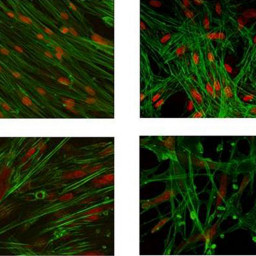An advanced in vitro model to assess glaucoma onset
Main Article Content
Abstract
Glaucoma is the second leading cause of blindness worldwide. Currently, glaucoma treatments aim to lower intraocular pressure by decreasing aqueous humor production or increasing aqueous humor outflow through pharmacological approaches or trabeculectomy. The lack of an effective cure requires new therapeutic strategies. We compared the biological responses of a three-dimensional trabecular meshwork model with or without perfusion bioreactor technology to better understand the early molecular changes induced by prolonged oxidative stress conditions induced by repeated daily peroxide exposure. We used standard 3D cultures of trabecular meshwork cells in Matrigel cultured under either static and dynamic conditions for one week. We studied changes in F-actin expression and organization in the cells, cellular metabolic activity, proinflammatory gene expression, expression of pro- and anti-apoptotic proteins, PARP-1 cleavage, and NFκB activation in the model. We demonstrate that the dynamic conditions improve the adaptive behavior of 3D trabecular meshwork cultures to chronic oxidative stress via offsetting pathway activation.
Article Details
Articles are distributed under the terms of the Creative Commons Attribution 4.0 International license (http://creativecommons.org/licenses/by/4.0/), which permits unrestricted use, distribution and reproduction in any medium, provided the original work is appropriately cited (CC-BY). Copyright on any article in ALTEX is retained by the author(s).


